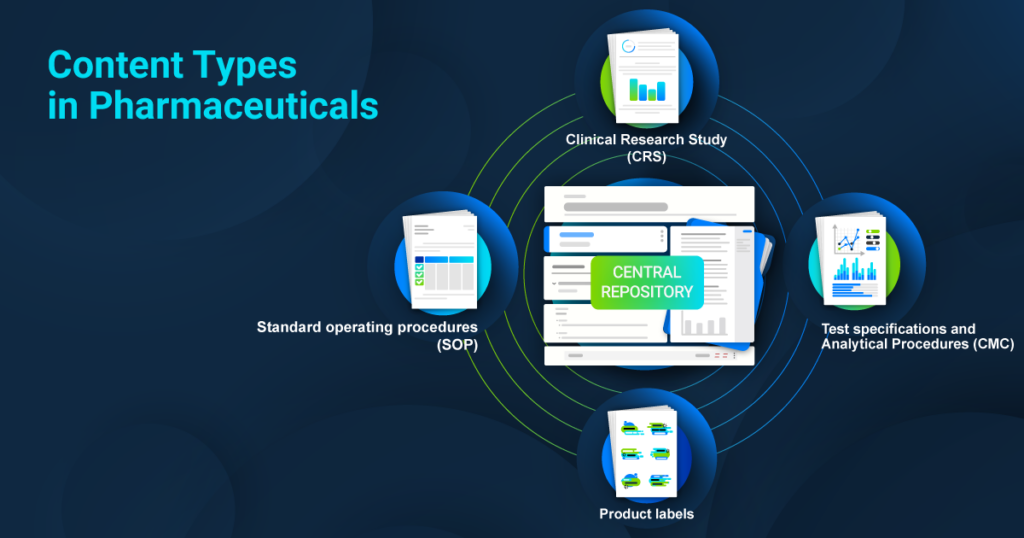I was pleased to be a guest speaker at the third episode of Quark’s “Close the Content Loop” webinar series, called
How Do Life Sciences Companies Keep Content Compliant?, where we discussed the importance of content compliance among life sciences organizations. When talking about content management for content compliance in the life sciences industry, we’re talking about a type of technology or software that automates traditional paper-based collaboration practices like writing, reviewing, and approving business documents for internal and external stakeholders.
Content management software simplifies content compliance by modelling paper documents in a graphical user interface – eliminating error-prone, manual processes and supporting accurate, faster time-to-market. When combined with data, industry best practices, and regulatory requirements, content management gives life science organizations four key business benefits: enhanced quality, improved compliance, decreased time-to-market, and reduced costs. Life sciences companies like pharmaceutical, medical device, and biotechnology manufacturers view both manufacturing compliance and
content compliance as a top priority because of the impact that their medicines have on human and animal health. Compliance regulations empower life sciences organizations to protect the health of the citizens they serve – so it’s critical for them to ensure medicines are properly manufactured. Scrupulously managing regulated content for compliance helps these organizations avoid significant potential penalties.
Reducing time to market with content automation
Before the pandemic, pharmaceutical executives were called to appear before a committee of the United States Congress to explain why the costs for medicines were so high for Americans. Once COVID hit, the national discussion pivoted quickly from reducing costs to reducing the time-to-market for life-saving vaccines. With clinical trials being closely analyzed for the efficacy and safety of important new manufacturing methods, people around the world developed an appreciation for the significant scientific and financial investment involved in bringing new medicines to market. One key element of regulatory compliance involves defining and following documented quality procedures. Regulations like good manufacturing practices define what pharmaceutical and medical device companies are expected to do, like quarantining materials during testing,
labeling products accurately, and controlling documentation. This means that life sciences companies must internally develop and enforce their own quality policies, procedures, work instructions, and forms that apply to their own products and then generate evidence that they are consistently following their own quality system for content compliance. As you can imagine,
content automation applications and platforms can greatly enhance compliance with pre-defined internal quality and standard operating procedures (SOPs) for these efforts. Content automation also plays a significant role in regionalization and translation. Local health authorities enforce regulations differently, and life sciences companies are required to submit their applications and reports with different content, in different languages, and in different file formats, depending on where these companies
market their medicines globally.The challenges of updating product labels
Our pharmaceutical clients tell us that updating their product labels is one of the most challenging problems they face today, with global companies like Pfizer and J&J
updating tens of thousands of their product labels throughout the world each year. Pharmaceutical product labels
contain important information for patients and prescribers about the strength, form, and positive and negative effects of each medicine. Labels are distributed in many formats – affixed on containers, published on websites, or in the form of medical device instructions. Local health authorities define how pharmaceutical companies should submit their product labels for approval. Also, a single safety update to a medicine can affect hundreds of labels involving different strengths, dosages, packaging, and local languages. Through content, properties, workflows, and security, content management applications and platforms help pharmaceutical companies control their product label content from centralized product information called core data sheets to local labels in different languages.
Addressing content production challenges with structured authoring
Structured content – or modular content – includes both text and fields that identify the structure of the text, like paragraphs and list items, that can be tagged, reused, and reformatted to display accurately across any device. For example,
structured content authoring in controlled, compliant components that is transformed when approved into required regulatory outputs can simplify the complex process of managing a significant number of product label changes in an end-to-end process. Electronic signatures and audit trails in modern content management applications and platforms provide the assurance required during health authority audits of global pharmaceutical companies. Life sciences organizations looking to optimize their content management processes must deploy next-generation technologies like
low-code and no-code authoring solutions. And implementing end-to-end platforms for strategies to manage component-level content during authoring and reviewing is key to this success. One of our pharmaceutical clients has done just that. They have deployed a next-generation solution platform using Glemser’s
ComplianceAuthor AI that leverages Quark’s Publishing Platform NextGen product. As a result, client subject-matter experts (SMEs) can revise and reuse content while safeguarding content compliance and minimizing their regulatory risks. Quark’s XML Author product is key to embedding structured content into Microsoft Word. This feature allows structured tags modeled as Word styles to be converted to tags when stored and published. This unique and innovative approach allows SMEs to author their structured content using Microsoft Word, which is the user interface that they are accustomed to. In addition, the use of a component repository provides reuse, a modular strategy, and consistent results with regulated content like our client’s quality testing specifications and analytical procedures. This client has a clear plan to introduce innovation to their organization for their future growth and to achieve industry-leading goals.
Content reuse with component content management systems
Content creation and reuse is only possible with structured authoring. Automating
content collaboration and feedback, particularly from regulatory agencies, is essential. Regulatory approval is a key step in the end-to-end process of developing life-saving medicines that is long and complex. Automating the submission and feedback of medicinal product content between pharmaceutical manufacturers and health authorities in modern content management applications and platforms can improve quality and accelerate time-to-market. It’s also important to remember that modern content management applications and platforms include a centralized repository – or
component content management systems (CCMS) – for storing electronic documents with electronic signatures, electronic folders with electronic audit trails, and electronic file cabinets. Centralized content assets provide instant, global access to the “single source-of-truth” of product information when needed inside the pharmaceutical company and to demonstrate compliance with internal quality procedures and work instructions and external regulatory requirements during health authority audits.
Conclusion
I was thrilled to be part of this discussion on the importance of simplifying content compliance processes. At Glemser, we’ve supported global pharmaceutical clients in North America and Europe with enterprise, compliant, structured content management solutions for over 15 years.
Our solution combines Quark Publishing Platform NextGen with regulatory compliance, natural language processing, and artificial intelligence for global life sciences clients to introduce essential medications in the most productive and efficient way.
Interested in introducing AI-powered structured content to your labeling workflows? Contact Glemser today to get started.


